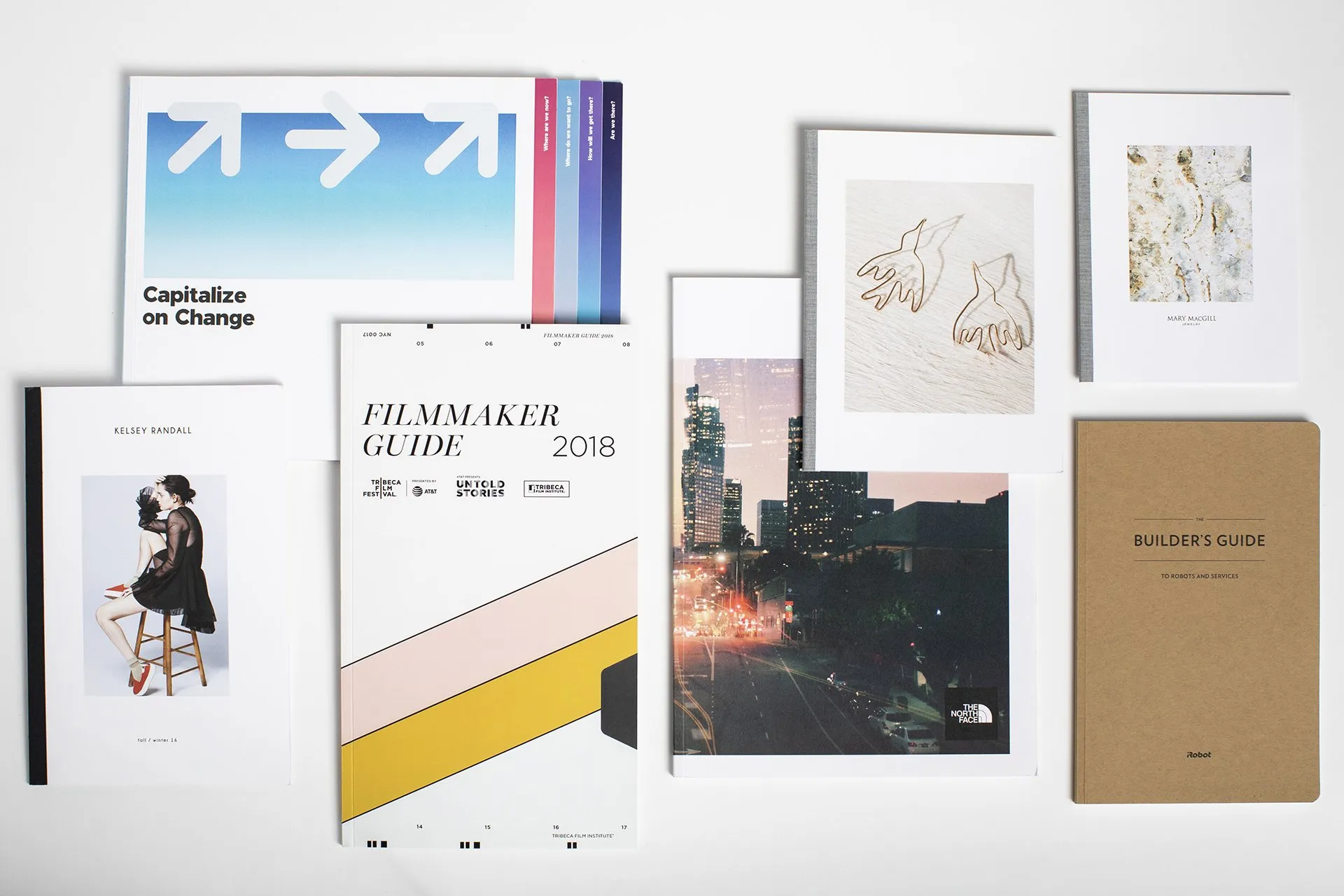
Four Types of Binding for Book Printing
April 20, 2020
When someone is searching for a book on a shelf, typically the first thing they notice is the spine. The spine is the backbone of the book, it holds it all together. When you think about it, the spine is really just comprised of the binding. That’s why when you’re deciding where to print and publish your next book, it is important to consider the binding type as well as the quality.
4 Book Binding Types
Hard Cover Binding
Strong and durable, hardcover binding is the longest-lasting book binding option. With hardcover bookbinding the inside pages are stitched together in sections, glued to a long piece of paper, and then the paper is glued to the spine.
When should you choose hardcover binding?
If your book is over 40 pages and under 600 pages, it is recommended that you use hardcover binding. Typically textbooks, dictionaries, encyclopedias, and other large books are bound using a hardcover bind. These types of books are typically expected to last for quite a bit of time, and this is due to their durable binding and spine.
Perfect Binding
A perfect bound book is more commonly referred to as a softcover book and is typically much cheaper to produce than a hardcover bound book. Using this method of binding, the cover of the book is made of a thick, coated cardstock and the spine is glued or threaded together. Perfect bound books are both durable and professional-looking.
When should you use perfect binding?
If you are looking to produce a large number of books for a lower cost, perfect binding is for you. As we mentioned above, it is quite cheaper to produce a perfect-bound book, but in addition to that, it is much cheaper to ship these types of books as well! The types of projects that typically use perfect binding include comic books, coloring books, and workbooks.
Spiral Binding
Spiral binding is exactly what it sounds like. The pages of a book are bound together using a plastic or metal coil. Spiral-bound books offer flexibility and the ability to open a full 360 degrees with no bending to the book or pages themselves.
When should you use spiral binding?
If you’re printing out slides for a presentation, making a workbook, an employee manual, or anything where you’ll need the flexibility to write on a page or take notes – spiral binding is for you.
Saddle Stitch Binding
Made for books or booklets with a lower page count, a saddle stitched book is bound together by staples.
When should you use saddle stitch binding?
If your print job is something marketing-related like a booklet, a pamphlet, a brochure, a catalog or a magazine, saddle stitch printing is for you. Typically, there is a limit to pages these staples can hod making them super lightweight and easy to take to meetings, conventions, or trade shows.
When you’ve worked hard on a book or booklet, choosing the type of binding might not seem like it is an important part of the process, but each component of a book will help you grab someone’s attention…down to the very last stitch!